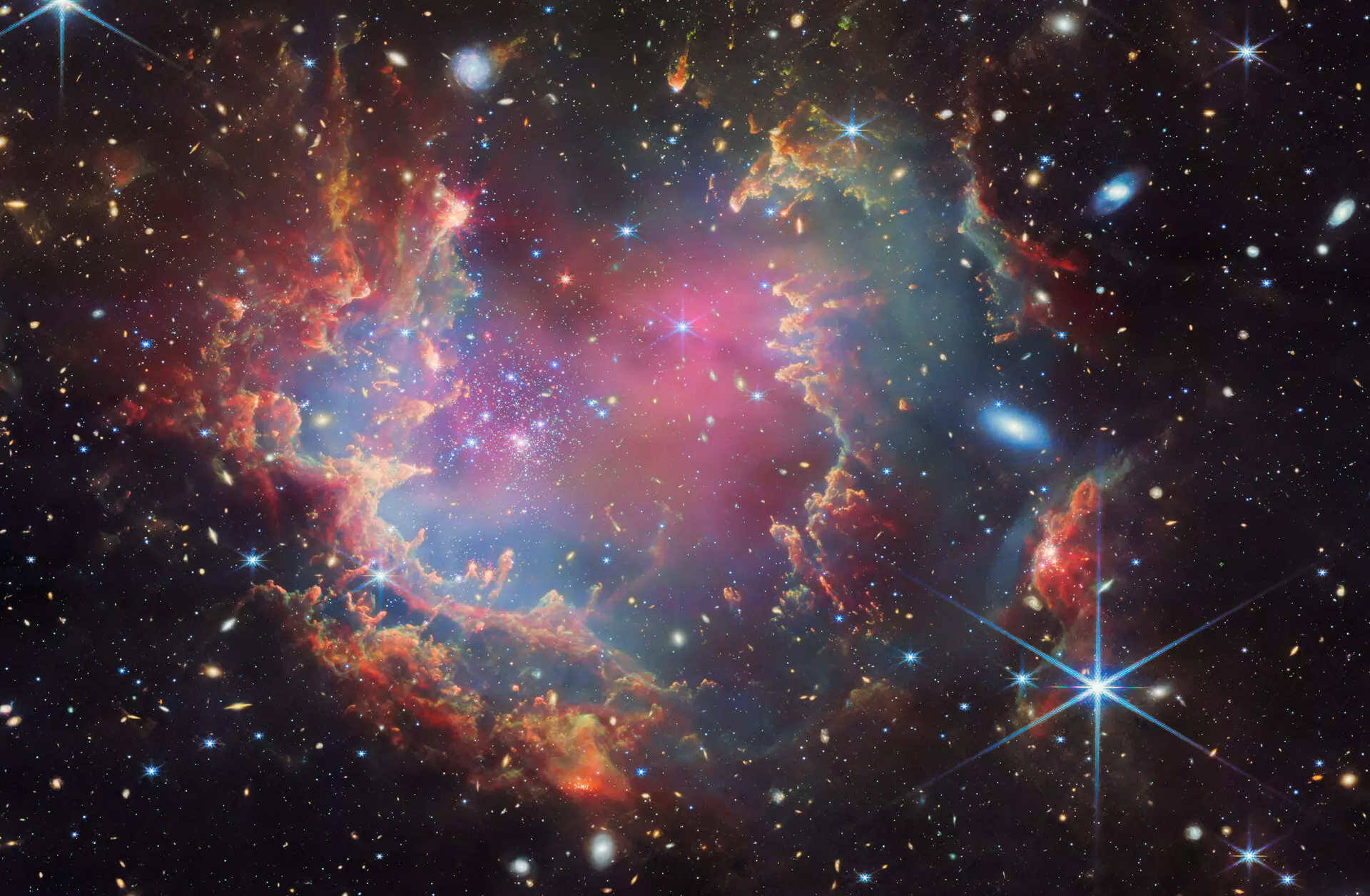Some star-like objects simply do not have enough material to become stars because they are not massive enough to initiate nuclear fusion in their cores. There are a few thousand such brown dwarfs known in the Milky Way, and we have never seen one outside our galaxy before. These objects are impressive, making them difficult to see beyond a certain distance.
However, thanks to James Webb's incredible sensitivity and precision, all that changed. The telescope was pointed at the young star cluster NGC 602, located in the Small Magellanic Cloud, a nearby galaxy visible from the Southern Hemisphere, 200,000 light-years from Earth. Researchers while detecting such things They foundWhich are most likely brown dwarfs. “So far, we have known about 3,000 brown dwarfs, but they are all in our galaxy,” says Elena Manjavakas of the European Space Agency in a statement published regarding this discovery.
Brown dwarfs are heavier cousins of the gas giants, ranging in mass from 13 to 75 times the mass of Jupiter. However, there are no strict classification boundaries, and the transition between gas giants and brown dwarfs is unclear. For example, objects discovered by the James Webb Space Telescope are about the size of Jupiter, but they look like brown dwarfs. However, it is impressive that even such small objects can be detected in another galaxy.
“Only thanks to amazing sensitivity and resolution in the right wavelength range were we able to detect these objects at such great distances,” says Peter Zeidler, the ESA researcher who reported on the findings. He studies Lead author. “This was not possible before, and in the foreseeable future appears impossible with ground-based telescopes.” The work also demonstrated the importance of the collaboration between Hubble and JWST. Hubble showed that this cluster contains many young, low-mass stars, while the James Webb Space Telescope made observations that already showed some brown dwarf candidates.
One way to distinguish between brown dwarfs and planets is how they formed. If the object resembles a star – a mass of collapsed material – it is a brown dwarf. If it is made up of smaller pieces and accumulates gas, then it is a planet. As far as researchers know, these candidate stars formed as stars, suggesting they are brown dwarfs, but their similarity to exoplanets could lead to new insights. Brown dwarfs appear to form in the same way as stars, except that they do not accumulate enough mass to become full-fledged stars. “Our results fit this theory well,” Zeidler notes. “These are the first giant extrasolar counterparts outside the Milky Way,” adds Mangavakas.







